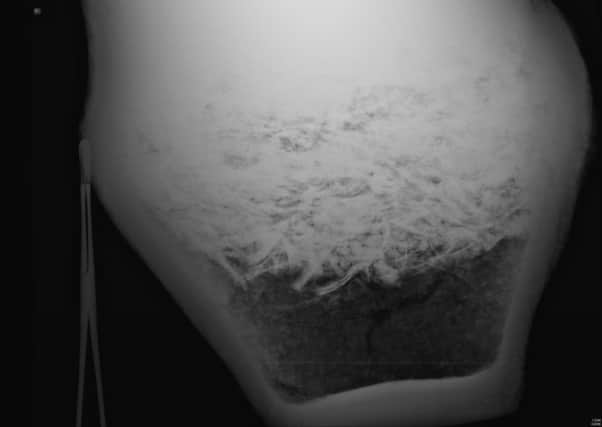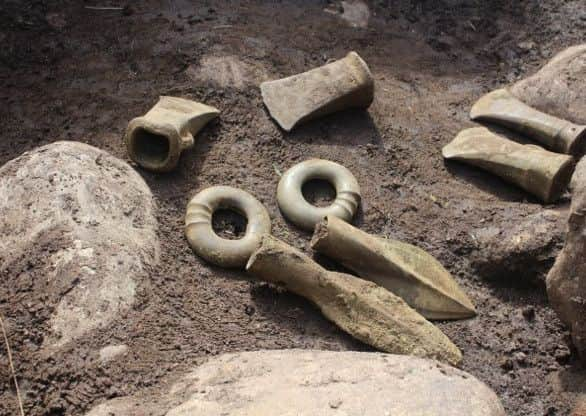Bronze Age finds in Morecambe Bay dig


As part of the ‘Barrowed Time’ community archaeology project, the team excavated a Bronze Age burial mound which was originally discovered when two local metal detectorists found part of a Bronze Age Hoard.
One of the star finds from the site was an early Bronze Age funerary urn (between 4,200 and 3,600 years old) that was found buried upside down, beneath three slabs of stone. A micro excavation of the urn (pictured above) discovered the cremated remains of at least one adult individual. The huge amount of bone insideis something not normally seen and suggests that more than one person was interred inside.
Advertisement
Hide AdAdvertisement
Hide AdThe remains of a flint ‘thumb-scraper’ tool were found , that would have been buried with one of the individuals.


In addition to the urn, whilst archaeologists were on site a second hoard was discovered nearby, consisting of bronze axe heads, spears, two pennanular wrist rings, complete arm rings, a chisel and a pair of horse harness ornaments. A 3,000-year-old pressed flower placed inside the hollow end of an axe handle and buried with other weapons, jewellery and ornaments, was found. Most of the objects were in virtually pristine condition, and the variety was striking and very rare.
Dr Ben Roberts, project co-director and lecturer at Durham University, said: “These barrows are not found in isolation – there are normally a number of them in the same area. We’ve confirmed that one of them is a huge ring cairn, which was constructed with large white limestone blocks, quartzite and even rock crystal. It would have been a striking white beacon and landmark.
“The items found in the hoard must now be assessed and analysed in a laboratory, before a coroner decides whether they can be officially designated as treasure. Then they’re offered up to local or national museums.”